Old Woman Plague and the Black Death
I have done a post about some of these images before, but the whole Death-theme over at told_tales gave it new relevance. So I've added lots more images, and some text which ended up expanding the post quite a bit.
------

In Norway there are many legends and stories about the Black Death. They all usually start with: "The Black Death came to Norway in 1348, and when it left there was hardly a person alive"
My favourite story was the one later illustrated by Theodore Kittelsen, and it goes something like this; During the Black Death the plague took the shape of an old woman, who hobbled from village to village, farm to farm. She’d be in old, raggedy clothes and carried a rake and a broom. If you saw her use the rake that meant that some of the people in the area would die. If she used the broom then everyone, yourself included, would be swept away.
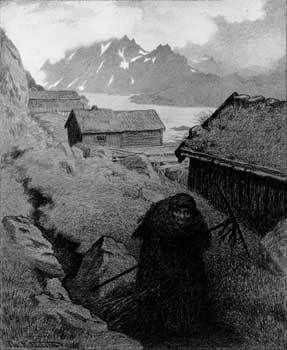
The old woman was called Plague or Old Woman Plague. She smelled of death, dust and nothingness.
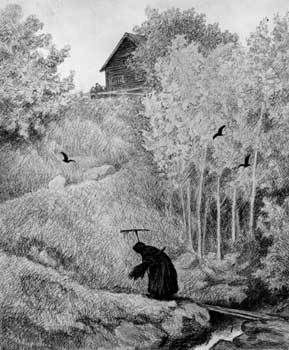
The title of this painting is "Mother, there is an old woman coming" - and for me at least that title makes the images even worse.
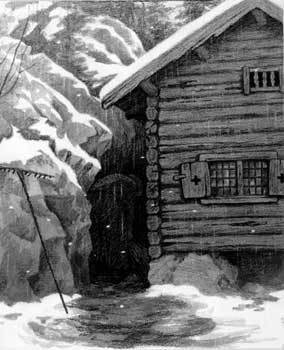
Old Woman Plague would sweep each nook and corner. She was practical and patience.

You could not hide....
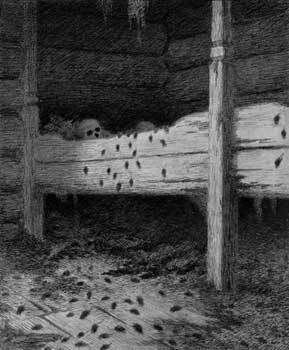
Where she was finished there was nothing left except desolation...

..despair...
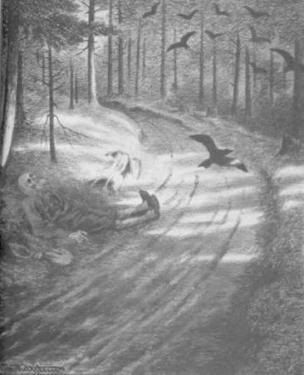
...death...
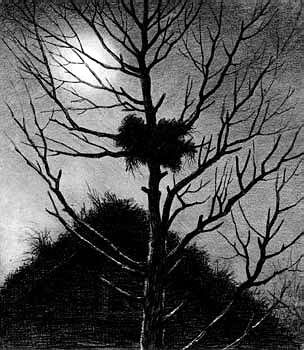
..and deserted farms. This shows the tree that would be planted before the main house on all Norwegian farms. The tree was usually taken as a sign of how the farm was doing. A large and green tree meant a prosperous farm. Here the tree is dark and the nest amongst its branches is abandoned.
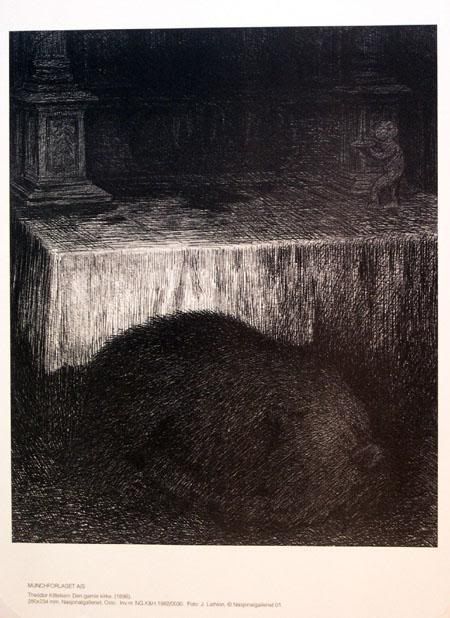
In some placed the death toll was so high that whole communities were wiped out. This image is called "The Old Church". Its based on a story of a hunter, a hundred years after the plague, and how he was deep in forest hunting. He fired a shot and a strange clang was heard - as if he had hit metal. He went to investigate and it turned out he had shot the church bell of an old church whose community had all been wiped out by the plague. So many people had died that everyone had simply forgotten the place.
He went into the church and there before the altar was a sleeping bear - and that is what is shown in this painting. The bear attacked but the hunter managed to kill it.
Later the hunter got the nearest priest to re-open the church. And the bear? Its skin was hung on the wall near the alter - it's still there today.
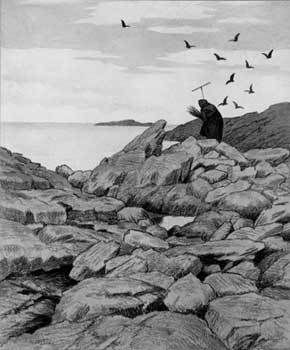
Such was the trail left by Old Woman Plague.
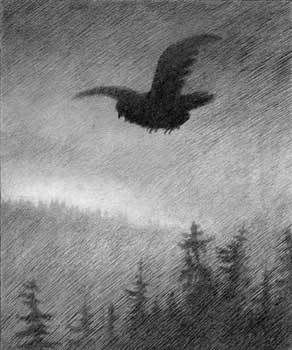
She came to a country filled with people, and left a desolate place where nature had retaken the land. This shows a Capercallie, which is known in Norwegian as a Tiur or a 'trollbird'. It was said to be represent the trolls and hags, and those that dwelt below.
Kittelsen used the bird to symbolise the darkness and uncertainty of the land after the plague.
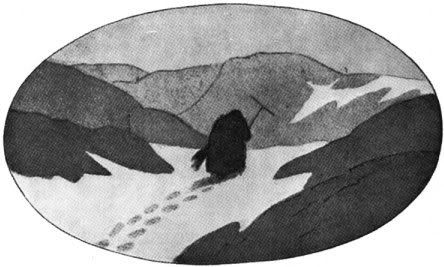
There was nothing you could do against Old Woman Plague. You could not barter, you could not beg - you could just hope that someday she would leave....
cross-posted to told_tales
------

In Norway there are many legends and stories about the Black Death. They all usually start with: "The Black Death came to Norway in 1348, and when it left there was hardly a person alive"
My favourite story was the one later illustrated by Theodore Kittelsen, and it goes something like this; During the Black Death the plague took the shape of an old woman, who hobbled from village to village, farm to farm. She’d be in old, raggedy clothes and carried a rake and a broom. If you saw her use the rake that meant that some of the people in the area would die. If she used the broom then everyone, yourself included, would be swept away.

The old woman was called Plague or Old Woman Plague. She smelled of death, dust and nothingness.

The title of this painting is "Mother, there is an old woman coming" - and for me at least that title makes the images even worse.

Old Woman Plague would sweep each nook and corner. She was practical and patience.

You could not hide....

Where she was finished there was nothing left except desolation...

..despair...

...death...

..and deserted farms. This shows the tree that would be planted before the main house on all Norwegian farms. The tree was usually taken as a sign of how the farm was doing. A large and green tree meant a prosperous farm. Here the tree is dark and the nest amongst its branches is abandoned.

In some placed the death toll was so high that whole communities were wiped out. This image is called "The Old Church". Its based on a story of a hunter, a hundred years after the plague, and how he was deep in forest hunting. He fired a shot and a strange clang was heard - as if he had hit metal. He went to investigate and it turned out he had shot the church bell of an old church whose community had all been wiped out by the plague. So many people had died that everyone had simply forgotten the place.
He went into the church and there before the altar was a sleeping bear - and that is what is shown in this painting. The bear attacked but the hunter managed to kill it.
Later the hunter got the nearest priest to re-open the church. And the bear? Its skin was hung on the wall near the alter - it's still there today.

Such was the trail left by Old Woman Plague.

She came to a country filled with people, and left a desolate place where nature had retaken the land. This shows a Capercallie, which is known in Norwegian as a Tiur or a 'trollbird'. It was said to be represent the trolls and hags, and those that dwelt below.
Kittelsen used the bird to symbolise the darkness and uncertainty of the land after the plague.

There was nothing you could do against Old Woman Plague. You could not barter, you could not beg - you could just hope that someday she would leave....
cross-posted to told_tales